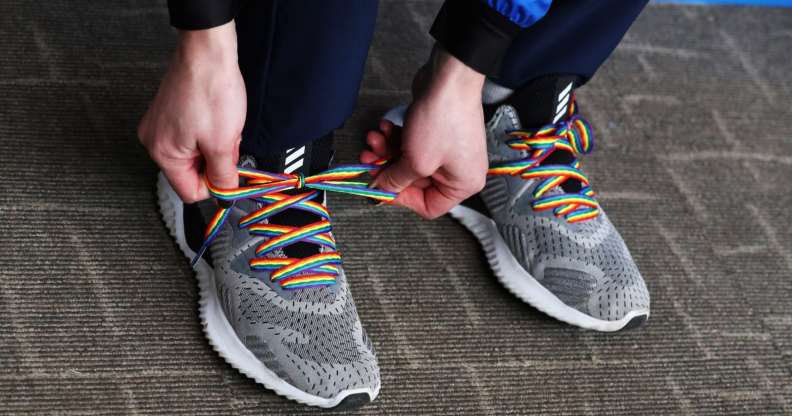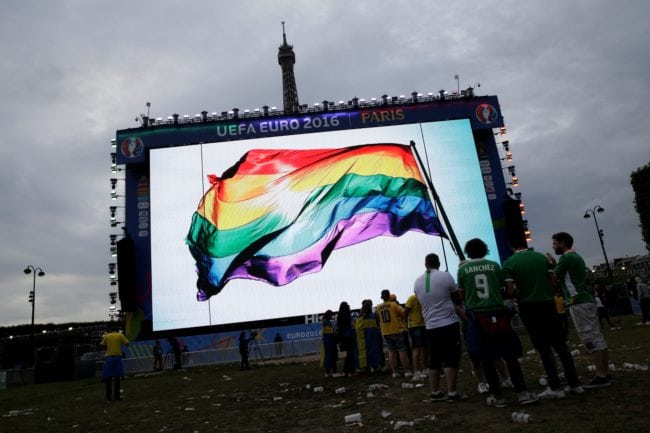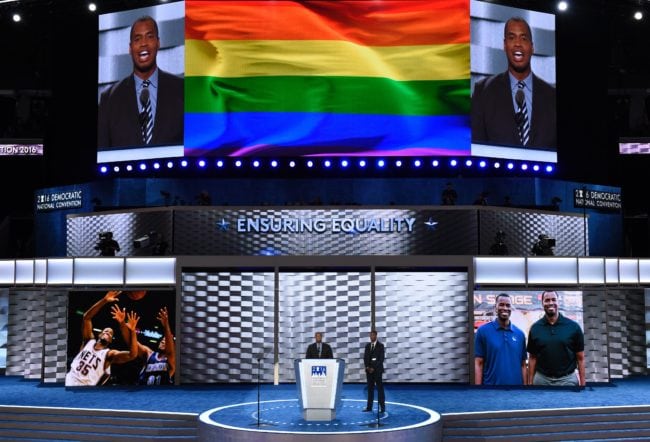LGBT youth in sports “overwhelmingly” remain closeted

Skeleton athlete Lizzy Yarnold of Great Britain ties a pair of rainbow shoelaces which signify support for LGBT rights on February 11, 2018 in Pyeongchang-gun, South Korea (Photo by Ker Robertson/Getty Images)
At least 80 percent of gay, lesbian, bisexual and queer teen athletes hide their sexuality from coaches, a report published last week by the Human Rights Campaign (HRC) foundation and the University of Connecticut showed. The percentage of closeted student athletes increases to 82 percent among trans youth.
The study surveyed more than 12,000 teenagers in the US, aged between 13 and 17, who participated in HRC’s online 2017 LGBT+ Teen Survey. Researchers decided to focus specifically on the experience of LGBT+ youth in sports because of the positive social, psychological and physiological effects of engaging in physical activities that teen may miss out due to lack of acceptance.
Only 24 percent of the respondents say they play a school sport, compared to 68 percent of a national non-LGBT+ sample—that percentage of sports participation drops to 14 percent for non-binary youth and transgender boys and 12 percent for transgender girls.

Supporters stand in front of a giant screen displaying a rainbow flag to pay tribute to the victims of the shooting of Orlando, in a fan zone in Paris during the Euro 2016 football tournament on June 13, 2016 (Photo by Thomas Samson)
“Sports are a transformative way for students to build social skills and community, but when too many LGBTQ student-athletes are blocked from being their true selves—we fail them. Coaches and administrators must do more to make every court, field, track and mat a welcoming place for all,” Ashland Johnson, HRC director of public education and research, said in a statement commenting on the study.
According to the survey, one of the main issues hindering LGBT+ teen athletes from fully expressing themselves is the locker room environment. “I don’t feel safe in the locker room” one respondent said, a feeling shared by 41 percent of transgender boys, 34 percent of transgender girls and 31 percent of the non-binary youth surveyed. “I was bullied for being transgender,” another anonymous respondent said.
Another issue hindering LGBT+ youth participation in sports is the widespread use of homophobic language, such as the use of the word “gay” in a derogatory manner. “The guys on sports team… call everything they don’t like ‘gay’,” one of the survey respondent was quoted as saying.
“When LGBTQ teens can be their true selves in athletics, it not only benefits that athlete, it benefits their team and community. This data is an important starting point to identifying ways schools can improve the experiences of their LGBTQ players,” Johnson said.

Jason Collins speaks during Day 1 of the Democratic National Convention at the Wells Fargo Center in Philadelphia, Pennsylvania, July 25, 2016 (Photo by Saul Loeb/AFP/Getty Images)
Jason Collins, a former NBA player who came out as a gay man in an article for Sports Illustrated in 2013, shared the research with his more than 100,000 Twitter followers. “Sports are for everyone, including #LGBTQ youth,” Collins, whose coming out represented a landmark moment in LGBT+ acceptance in sports as he was the first active male athlete in a major US professional team sport to do so, wrote in his tweet. “This data provides a unique opportunity to make sports more inclusive for all athlete,” he added.

